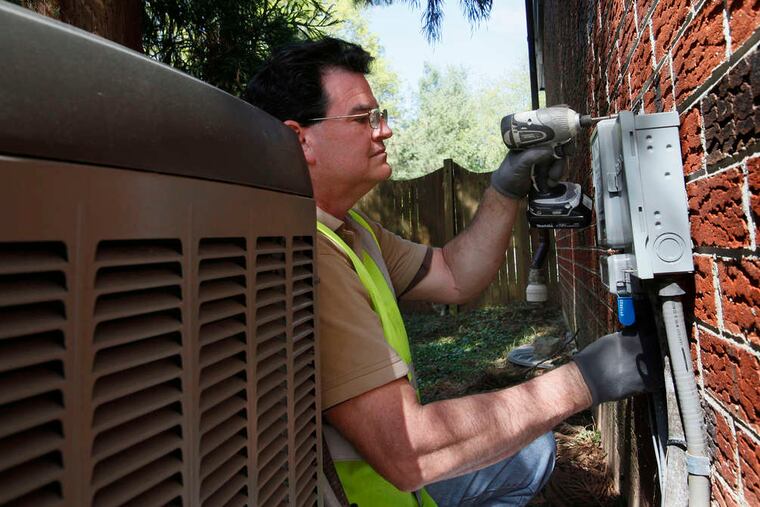Peco pulls the plug on Smart A/C program, which saved power during heat waves
Peco ends a program that paid customers who let the utility to shut off their air conditioners for 15-minute intervals to curtail energy demand.

Peco is discontinuing a popular program that paid customers to allow the utility to remotely cycle on and off their central air-conditioning systems to curb overall energy consumption.
The Philadelphia utility this month notified 62,000 residential customers with the wireless switches installed on their air conditioners that it would end the Smart A/C Saver program in May. Since the program is active only in the summer, the closure is effectively immediate.
“After 10 years of operation, declining interest in the program, and the emergence of more comprehensive ways to save energy, we realized it was time to retire the program,” Peco said in a statement posted on its website.
“Cycling air conditioners was an effective approach 10 years ago,” it said. “However, now there are other ways of curtailing periods of peak energy consumption and they start with making sure homes and businesses are as energy-efficient as possible.”
The Smart A/C Saver program initially paid customers $120 a year to shut off their air conditioners for 15-minute intervals during “conservation events,” usually on the hottest summer days when power demand pushed the limits of the grid’s capacity. By 2012 more than 80,000 residential customers were enrolled.
Peco later cut the customer payments to $80 a year, and then to $40 a year, to bring down costs. Enrollment last year stood at 62,000.
Peco last year asked the Pennsylvania Public Utility Commission to allow it to shift $4.7 million into the program to cover higher costs this year because of “greater than anticipated level of customer participation.” Peco said it had expected only 44,000 customers to stay in the program after it cut the payments to $40.
The “declining interest” in the program appears to have been primarily with the PUC.
A PUC staff report in February said that “demand response” measures like the Smart A/C devices were cost-effective, but conservation dollars were better spent on conventional energy-efficiency measures, including low-wattage lighting, programmable thermostats, or programs to induce customers to swap old appliances for new ones. The report said energy-efficiency practices over five years would save $35 million more than demand-response measures, such as the wireless devices to cycle air conditioners.
Energy-efficiency measures are “available every day of the year whereas the dispatchable demand response is often limited to a number of events,” Gladys Brown Dutrieuille, PUC chair, said March 12 before the PUC unanimously approved a tentative order that set guidelines for the state’s energy conservation measures that will go into effect in 2021.
Peco says the Smart A/C Saver gadgets can remain attached to homes and “will not affect the performance of air conditioners” after they pull the plug on the program. Customers who would like to have the unit removed can reach out to the utility’s contractor, Itron, at 1-866-291-3972.
The Smart A/C Saver program is one of several schemes that Peco offered to conserve power to comply with a 2008 energy-conservation law known as Act 129. The programs, aimed at different customer classes from residential to industrial, offered a variety of incentives for customers to improve lighting, upgrade appliances and equipment, and to conduct energy audits.
ACT 129 sets targets for the state’s seven investor-owned electric utilities to reduce peak demand and to cut energy consumption.
During the current five-year phase that ends next May, the seven utilities have budgeted $1.2 billion on energy-efficiency and demand-response measures. Peco, the state’s largest utility, is spending $437 million during that time.
The upcoming program, which starts in June, sets a target to reduce energy consumption 3.1% over the next five years at a cost of $1.89 billion, which the PUC estimates will yield $3.07 billion in benefits.
The utilities’ conservation plans will continue to provide additional support aimed at low-income customers, but discontinue support for government, nonprofit, and institutional customers, which Dutrieuille said have “exhibited robust participation in previous phases.”